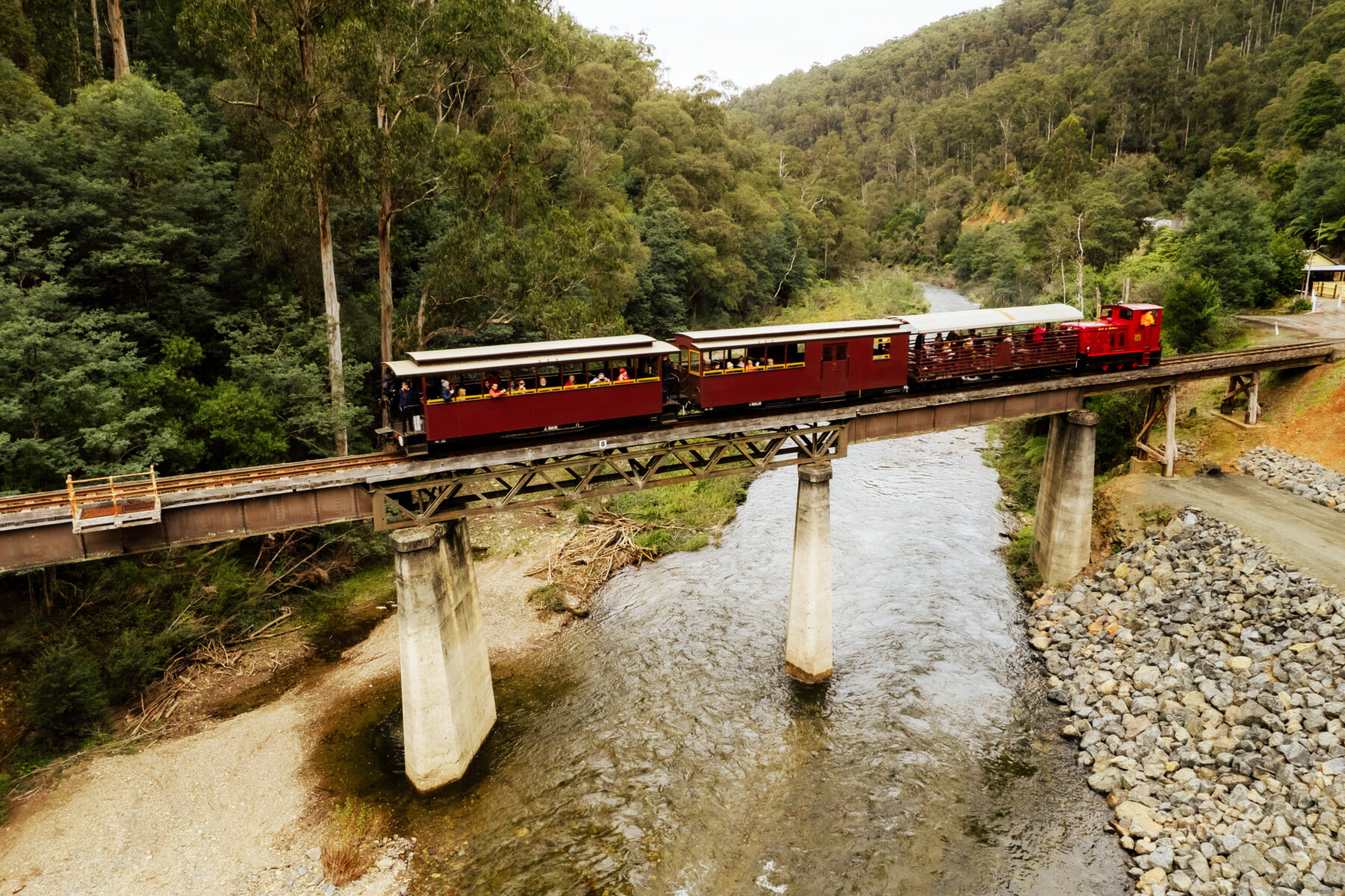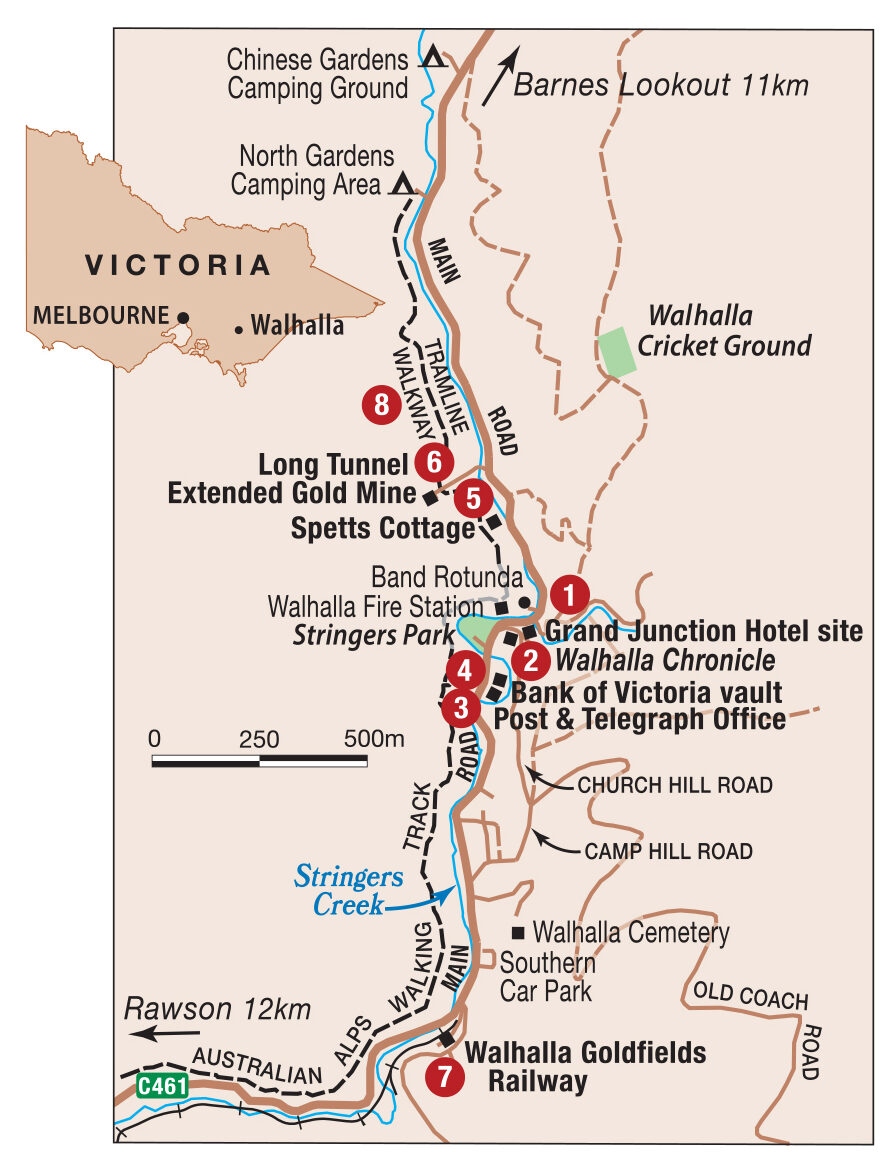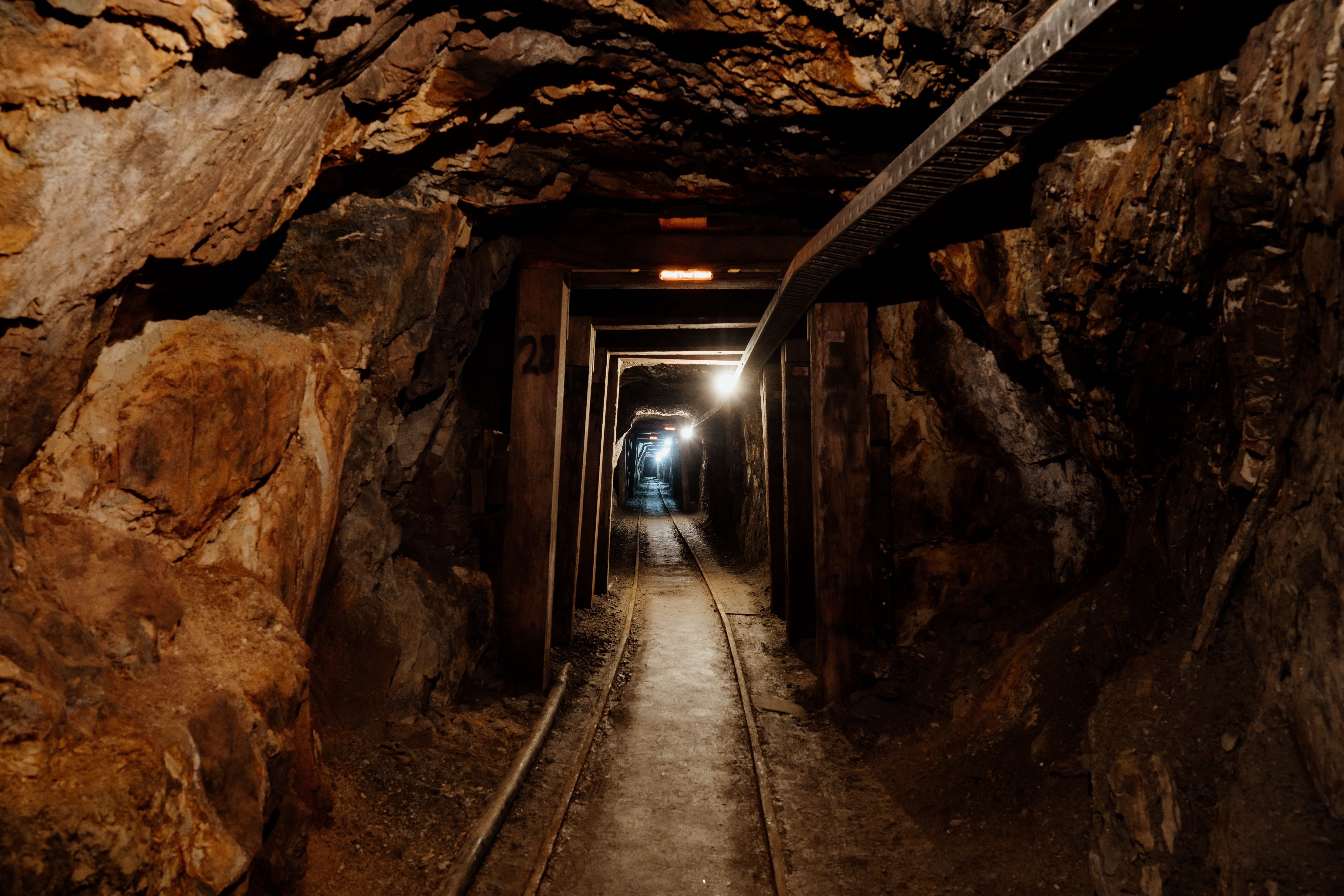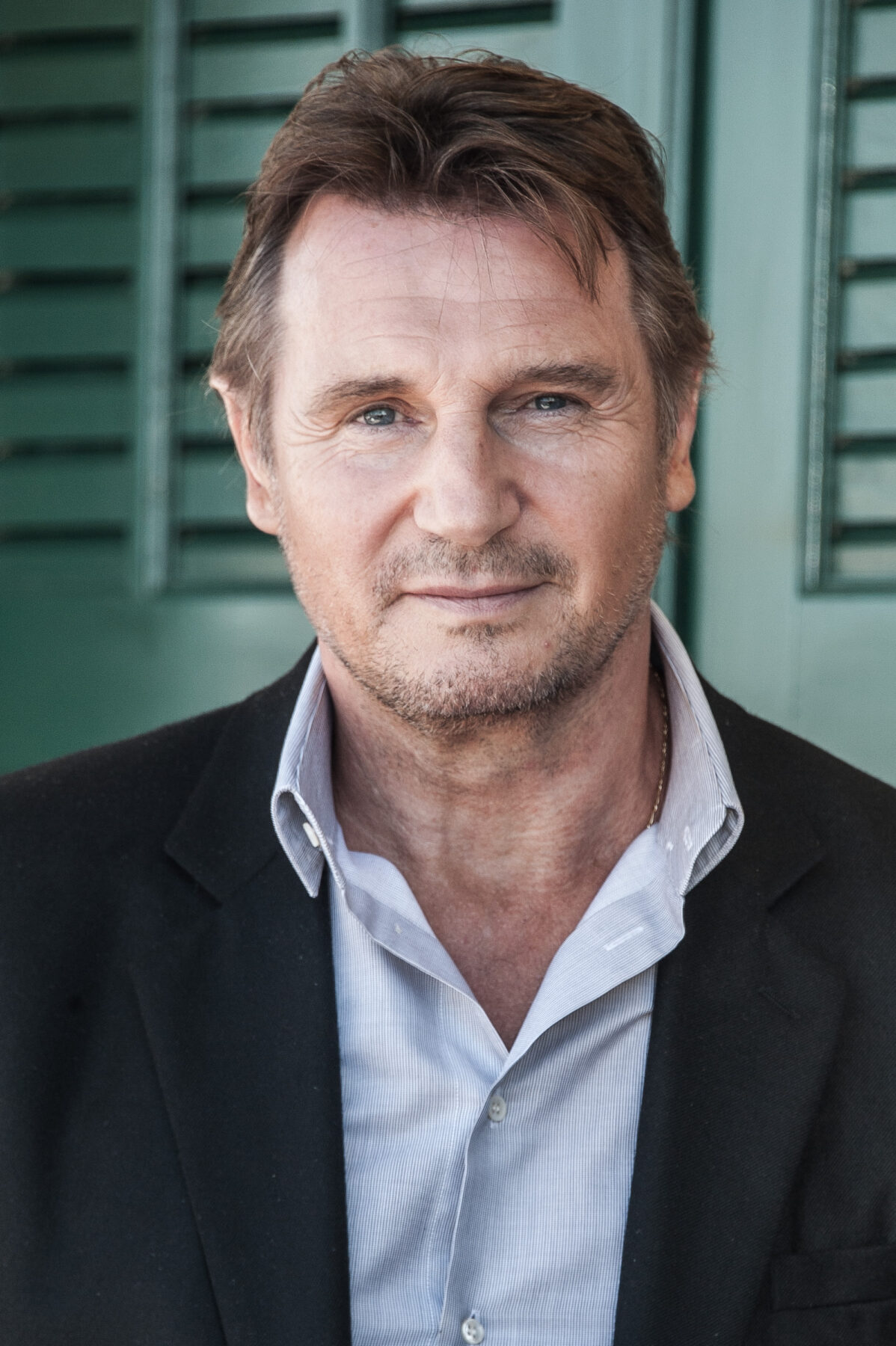A complete guide to Walhalla, VIC

Walhalla, known affectionately as “Australia’s Valley of the Gods”, is a beautifully restored historic goldmining town, perfectly located in a narrow valley between hills that are now verdant, but were once almost totally denuded of trees. The mining companies that occupied the area cut down the trees to fuel their machinery and laid 30km of tram tracks out into the woods to collect timber.
Walhalla can reasonably lay claim to being the best historical goldmining-era experience in the country. The buildings are well maintained and have clear and detailed signposting. The experiences on offer include a tour of Long Tunnel Extended Gold Mine, an intriguing cemetery that clings to the steep sides of the valley, the cricket oval perched above the town, and a delightful journey down the valley on the restored Walhalla Goldfields Railway. Set in the Gippsland mountains, it’s a place to wander around and savour.

The village has a timeless quality, which is partly due to the brief life of the original settlement. It was established and occupied by miners between 1863 and 1914. During that time, the population of the town and its surrounding hilltop “suburbs”, including Happy Go Lucky and Mormon Town, rose to more than 4000, and it was recognised as one of the richest goldfields in the country.
Walhalla is a sublime historic experience in a very beautiful setting. A wander through the village ends up being a fascinating insight into the nature of settlement and the people who decided to live – albeit for a very short time – in this isolated but picturesque environment.

Location:
Walhalla is located 183km east of Melbourne via the Princes Highway and the Moe–Walhalla Road.
Origin of Name:
Originally Stringers Creek, in 1866 the name was changed to Walhalla, after the nearby Walhalla Gold Mine. It’s thought the mine was named by manager Henry Rosales after a monument of the same name he saw on a trip to Europe. The monument was in honour of King Ludwig of Bavaria.
Visitor Information :
The Corner Stores
Corner Main and Church Hill roads
Useful Websites:
Visit Walhalla, Historic Walhalla, Visit Victoria – Walhalla
Places of interest
1. Chimney of the former Grand Junction Hotel
The Junction Hotel, built in late 1865 by John F. Williams, was renamed the Grand Junction in 1872 and became Walhalla’s only three-storey hotel. It was de-licensed in December 1913.
2. Reconstructed office of the Walhalla Chronicle
The Walhalla Chronicle, the Walhalla Goldfields’ main newspaper, was established in 1870 by James Ryan, who brought his printing press across the steep ranges from the remote Crooked River Goldfields in East Gippsland.
3. Walhalla Post & Telegraph Office
A post office was opened on Stringers Creek Goldfield on 24 August 1864. According to early statistics, 1337 items passed through the post office in the first year, but by 1868, when the post office moved to new premises, this had grown to a staggering 157,383 items.
4. Bank of Victoria
A Bank of Victoria branch opened in Walhalla in aboutJune 1865. It was the largest of Walhalla’s banks and during its operation its vault stored about 74t of gold. It moved to a permanent building in 1868.
5. Spetts Cottage
One of about a dozen original goldrush-era cottages still standing in Walhalla, Spetts Cottage was built by Swedish-born Charles Spetts and his English bride, Eleanor, in 1871. The cottage boasted one of the finest gardens in the valley.
6. Long Tunnel Extended Gold Mine

This goldmine, which closed in 1914, was Victoria’s most successful and one of Australia’s richest, yielding 13.7t of gold over six years of its working lifetime. The mine, which remains largely as it was when it closed, consists of 9km of underground passages to a depth of 1000m. Tours, which each take about 50 minutes, are conducted daily.
7. Walhalla Goldfields Railway
The original Moe–Walhalla railway opened in 1910 after years of lobbying by Walhalla’s townsfolk. But this 2’6″ narrow gauge railway arrived too late and was never a success. It closed in 1944, but in 1993 a group of enthusiasts began rebuilding the most spectacular section – from Thomson River up Stringers Creek Gorge to Walhalla. Today, the railway runs every Wednesday and weekend, and during public holidays and school holidays.
8. Tramline Walkway
This scenic walk – accessible from a steep path over the road from the Old Post Office or the Band Rotunda, or from Long Tunnel Gold Mine or North Gardens Camping Area – is about halfway up the hill to the west of the town and provides excellent views of Walhalla.
History
Before the arrival of Europeans, the district was home to the Gurnaikurnai people.
In December 1862, former convict Ned Stringer found gold in the creek that now bears his name.
In February 1863, the discovery of Cohen’s Reef led to a permanent settlement. The reef was quartz and only large mining companies had the capital to extract the gold.
In 1863 the Reefer’s Arms Hotel opened, followed by a temporary post office in 1864.
The Junction Hotel, later the Grand Junction Hotel, was built in 1865 and closed in 1913.
In 1866 the town was surveyed and its name changed from Stringers Creek to Walhalla.
In 1870 the Walhalla Chronicle and a state school opened.

By 1879 there was a regular coach service connecting the town to Moe.
In 1884 electricity arrived courtesy
of the Long Tunnel Company.
The population of Walhalla and the six mining hamlets in the immediate vicinity peaked at about 4500 in the 1880s.
Broadway actress and singer Suzanne Barrett, wife of explorer Sir Hubert Wilkins, was born in Walhalla as Susannah Evans in 1893.
By 1900, 55t of gold had been extracted from Cohen’s Reef.
The railway arrived from Moe
in 1910.
The last big mine closed in 1914.
Dismantling of the railway, including tracks and buildings, was completed by 1960.
The school closed in 1965.
Ice Road 2: Road to the Sky, starring Liam Neeson (pictured, right), is being filmed in the town in 2024. Walhalla portrays a Nepalese village.



